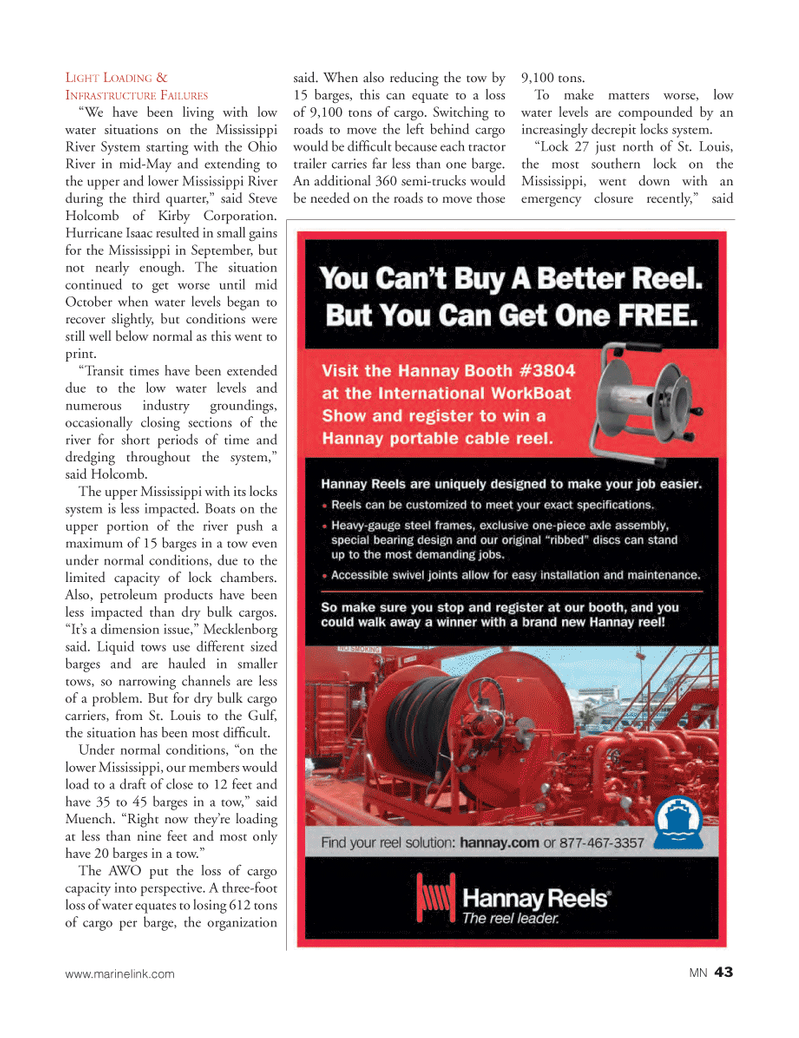
Page 43: of Marine News Magazine (November 2012)
Workboat Annual
Read this page in Pdf, Flash or Html5 edition of November 2012 Marine News Magazine
LIGHT LOADING & INFRASTRUCTURE FAILURES ?We have been living with low water situations on the Mississippi River System starting with the Ohio River in mid-May and extending to the upper and lower Mississippi River during the third quarter,? said Steve Holcomb of Kirby Corporation. Hurricane Isaac resulted in small gains for the Mississippi in September, but not nearly enough. The situation continued to get worse until mid October when water levels began to recover slightly, but conditions were still well below normal as this went to print.?Transit times have been extended due to the low water levels and numerous industry groundings, occasionally closing sections of the river for short periods of time and dredging throughout the system,? said Holcomb. The upper Mississippi with its locks system is less impacted. Boats on the upper portion of the river push a maximum of 15 barges in a tow even under normal conditions, due to the limited capacity of lock chambers. Also, petroleum products have been less impacted than dry bulk cargos. ?It?s a dimension issue,? Mecklenborg said. Liquid tows use different sized barges and are hauled in smaller tows, so narrowing channels are less of a problem. But for dry bulk cargo carriers, from St. Louis to the Gulf, the situation has been most dif cult.Under normal conditions, ?on the lower Mississippi, our members would load to a draft of close to 12 feet and have 35 to 45 barges in a tow,? said Muench. ?Right now they?re loading at less than nine feet and most only have 20 barges in a tow.? The AWO put the loss of cargo capacity into perspective. A three-foot loss of water equates to losing 612 tons of cargo per barge, the organization said. When also reducing the tow by 15 barges, this can equate to a loss of 9,100 tons of cargo. Switching to roads to move the left behind cargo would be dif cult because each tractor trailer carries far less than one barge. An additional 360 semi-trucks would be needed on the roads to move those 9,100 tons.To make matters worse, low water levels are compounded by an increasingly decrepit locks system. ?Lock 27 just north of St. Louis, the most southern lock on the Mississippi, went down with an emergency closure recently,? said www.marinelink.com MN 43MNNov2012 Layout 32-49.indd 43MNNov2012 Layout 32-49.indd 4311/6/2012 3:17:46 PM11/6/2012 3:17:46 PM

 42
42

 44
44
